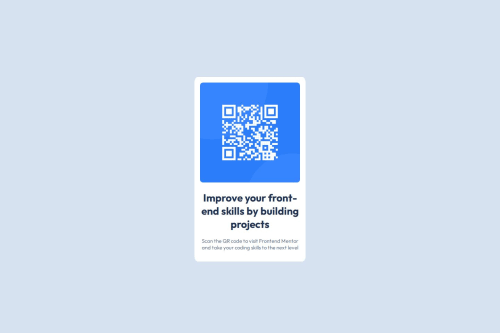CSS Flexbox, media query

Please log in to post a comment
Log in with GitHubCommunity feedback
- @NeonCodes
Hello, Good job completing the challenge! The design is pretty close to the original.
First, the positive:
- Your code is very concise and well-organized so we don't get lost while reading it (special mention for the
#descriptionselectors and@mediain the stylesheet) - Didn't know
font-optical-sizingexisted, that's nice. - The card is well-centered and sized with flexbox.
Second, potential area of improvement:
- The
h1seems slightly too big. You can tryfont-size:22px( or convert them to rem using a converter like Calculatorway)
I hope it helps. Happy Coding!
- Your code is very concise and well-organized so we don't get lost while reading it (special mention for the
- @Kitalphar
Great work!
Due to having used
vwunits for the containerwidththe container grows wider than probably intended, but it did gave me the idea of maybe using theresizeCSS property, or adding an option to enlarge the image on hover. In the future in case on the design i'm working on the image is small it could help the camera pick the QR code up better. Just food for thought... - @starberries
Hey @Perry2004, great work! I learned a few interesting things about font properties from looking through your styling, I didn't even know
font-optical-sizingwas an available property, so that's really cool.I did notice your container size has a lot of variability based on screen size. If you're interested in giving it a more controlled size range, I can suggest using
max-widthin place ofwidthand utilizingremunits for measurement. Here's how I set up the container size for mine if you'd like a comparison:.container { max-width:20rem; min-height: 31rem; }If you need any info on
remandem, I myself was just recommended this page on the subject, but essentiallyremunits are based on the root font size, so1remby default would be16px.Anyway, great work with the challenge, keep it up!
Join our Discord community
Join thousands of Frontend Mentor community members taking the challenges, sharing resources, helping each other, and chatting about all things front-end!
Join our Discord